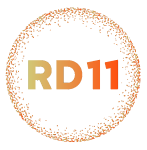Speaker
Description
Success of crystallographic experiments using weakly diffracting macromolecular crystals depends on a proper choice of the data collection protocol. Radiation damage is a critical factor limiting data quality and being able to predict the absorbed dose and mitigate the effects of exposure to X-rays is very important.
We present the set of methods and programs intended for optimal planning of X-ray diffraction by accounting the experimental purpose, the characteristics of the X-ray beam and instrumentation and by the samples properties. The information about the crystals mounted in the sample holder is taken from low-dose two-dimensional raster X-ray diffraction scans. The image analysis is carried out by program Dozor which recognizes the presence of a diffraction pattern from a macromolecular crystal, estimates the diffraction signal and produces the list of diffraction spot positions. Bases on Dozor’s output, the program MeshBest determines the areas of the mesh-scans which belong to the individual crystals and produces a three-dimensional crystal map showing estimates of the dimensions, centre positions and diffraction qualities of each crystal contained in the holder. Using this map, the best achievable results of data collection for any individual crystals are estimated by software program 3D-BEST. In last version of BEST, the strategy-determination method takes into account the variations in irradiated crystal volume at the rotation and possible translation of the sample. Diffraction intensities at any moment of data collection is calculated as the sum of diffraction intensities from small crystal voxels taking into account the profile of primary X-ray beam and the dose absorbed by each voxel. Such modelling significantly improves the accuracy of predicted data statistics and allows selecting the best trajectory of the crystal movements for helical or for multi-positional strategy of data collection.

